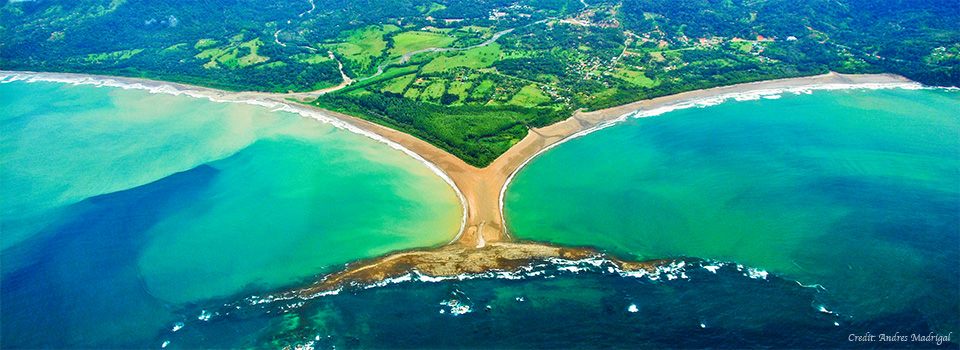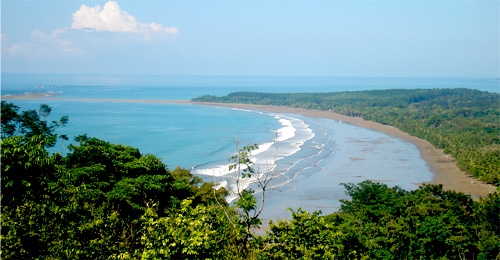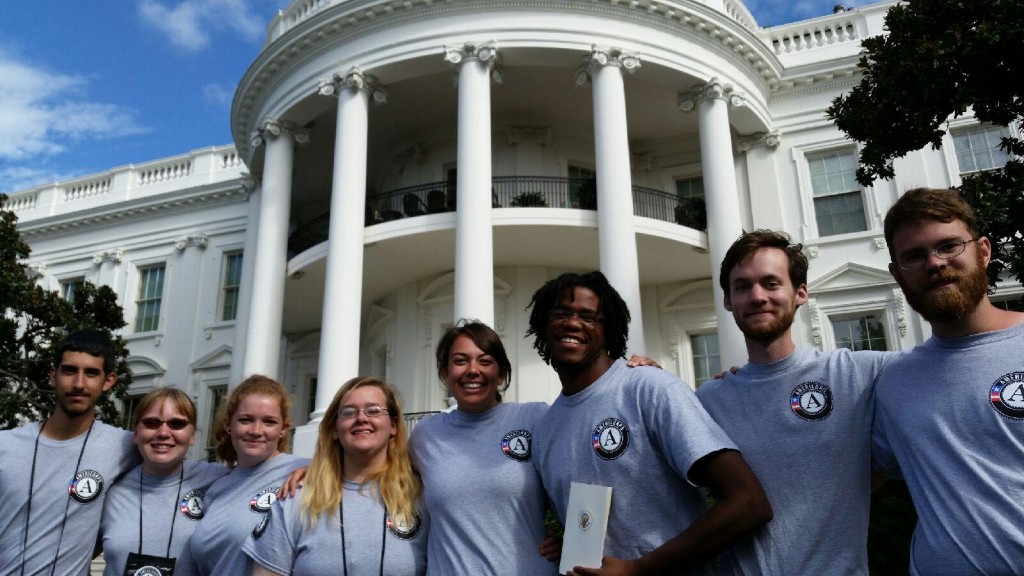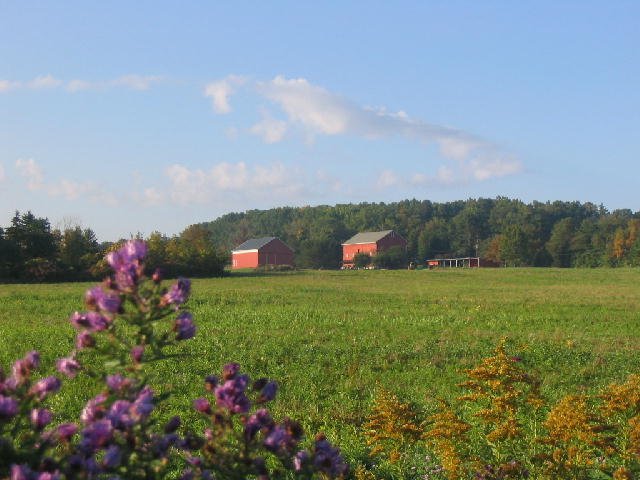Travel Learning Course: Geography 347: Environmental Alteration
Fall 2015
Focus: Comparative Global Environmental Change: Bahia Ballena-Uvita, Costa Rica & Delaware, Ohio
Learn how to collect environmental data in Delaware, Ohio (Fall 2015) and coastal Costa Rica (January 2016) and understand how it relates to regional and global climate and environmental change.
Collaborate with Amy Work (OWU 2004) and her community geography organization, Geoporter, in Bahia Ballena-Uvita. Work with local citizens in a developing ecotourism region
Data: Weather Station | Drone aerial imagery | Ecological assessment Soil moisture & temperature | Steam flow | Water quality | Whale monitoring
Visit: Arenal National Park | Bahia Ballena-Uvita | Eco Surfing | Whale Conservation | Mangrove Conservation | Marino Ballena National Park
Contact: Dr. Nathan Amador (nsamador@owu.edu) & Dr. John Krygier (jbkrygier@owu.edu)
Students need to apply and be pre-approved for this course, prior to registration for fall 2015 courses:
- Current Juniors and Returning Seniors April 6, 2015 (7am)
- Current Sophomores April 9, 2015 (7am)
- Current Freshmen April 13, 2015 (7am)
Details
Global environmental change is among the most important global issues of the next century and central to Geography 347: Environmental Alteration, a core course in Geography and Environmental Studies. The primary objective of Environmental Alteration is to explore the relationship between human and environmental systems from local to global scales. In order to grasp the importance of global environmental change, students need to 1) Understand the importance of scale to differentiate behaviors that modify the landscape (i.e., an individual throwing trash versus tropical deforestation) and their impacts (i.e., local stream pollution versus variability in large-scale precipitation patterns); 2) Understand and practice data collection methods, data analysis and presentation of findings; 3) Understand how research outcomes can affect local, positive changes addressing negative local and global environmental degradation; and 4) Understand the differential impacts of global environmental change by comparing various, worldwide locations, including differences between the Global South (e.g., Costa Rica) and Global North (e.g., the U.S.). The travel component proposed for Geography 347 allows students to effectively engage in all four of these course learning outcomes, building on our Sustainability Region model in Delaware, Ohio and extending it to collaborative work in Costa Rica. The course meets for 3 hours (regular course) + 2 hours (enrichment experience) per week.
The Travel Component:
Drs. Amador and Krygier and students in Geography 347 will travel to and conduct collaborative research in the region around Bahia Ballena-Uvita, Costa Rica.
Students and faculty in our course will be working, before, during and after our travel, with Geoporter, a non-governmental organization (NGO) located in Bahia Ballena-Uvita, Costa Rica. Amy Work, a 2004 OWU Geography Major, manages Geoporter. 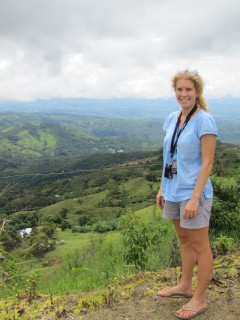 Amy is well known to members of the Geology & Geography program, has a background in geospatial and environmental education, and provides us with a unique opportunity to develop a long-term collaborative project between her organization and OWU, with the potential for repeated future visits by different courses and faculty. As residents of a costal area in transition from a fishing economy to one based on ecotourism, community members in Bahia Ballena-Uvita are interested in understanding their natural environment and the potential impacts of global environmental change: they share many of the same goals as the Environmental Alteration course. Amy has been working with community members to collect and map environmental information for over several years, providing a solid basis in practice. Geography 347 students will also learn the practice of data collection and mapping (as part of the enrichment component of the course), but also, importantly, develop an understanding of the theories and concepts required to analyze and understand collected data. Theories and concepts will be put into practice in Costa Rica, the collaboration designed so students and community members in Bahia Ballena-Uvita will come to understand both the theory and practice of environmental change at a range of scales.
Amy is well known to members of the Geology & Geography program, has a background in geospatial and environmental education, and provides us with a unique opportunity to develop a long-term collaborative project between her organization and OWU, with the potential for repeated future visits by different courses and faculty. As residents of a costal area in transition from a fishing economy to one based on ecotourism, community members in Bahia Ballena-Uvita are interested in understanding their natural environment and the potential impacts of global environmental change: they share many of the same goals as the Environmental Alteration course. Amy has been working with community members to collect and map environmental information for over several years, providing a solid basis in practice. Geography 347 students will also learn the practice of data collection and mapping (as part of the enrichment component of the course), but also, importantly, develop an understanding of the theories and concepts required to analyze and understand collected data. Theories and concepts will be put into practice in Costa Rica, the collaboration designed so students and community members in Bahia Ballena-Uvita will come to understand both the theory and practice of environmental change at a range of scales.
A fundamental focus of any discussion of human modification of the environment is recognition that the planet is composed of various, dynamically different climate regimes and biomes. A perfect case study is the comparison between environmental alteration and its effects in mid-latitudinal, continental Delaware, Ohio and coastal, tropical Bahia Ballena-Uvita, Costa Rica. Comparison between these two sites will allow us to observe (via various data collection sources) local and global-scale climate impacts on precipitation patterns, temperature variability, and sea level rise. The tropics represent the world’s most biodiverse regions, with Costa Rica accounting for 4% of the world’s known species (~500,000). The region is characterized by a warm, tropical climate and distinct wet and dry seasons. As a result of local and large-scale modification of the environment, the tropics are extremely sensitive to perturbations in the climate system, which generate an amplified response, making it vital to understanding the direct relationships between the human and environmental systems in the tropics.
Bahia Ballena-Uvita, on the Pacific Coast, borders Ballena Marine Park, which protects migrating humpback (and other species) of whales. Some of the best-preserved coral reefs in Costa Rica are a short boat ride away at Caño Island Biological Reserve. The coastal mountain chain forms the Path of the Tapir, a vital link in the Mesoamerican Biological Corridor. Nearby are indigenous reserves of the Terraba and Boruca people, and artifacts of their ancestors can be found close to the delta of the Terraba-Sierpe mangroves and wetlands, a protected, internationally recognized site. A little further south, near the town of Golfito, is a tropical fjord called the Golfo Dulce (1 of 4 tropical fjords in the world) with pods of dolphins sometimes numbering in the hundreds.
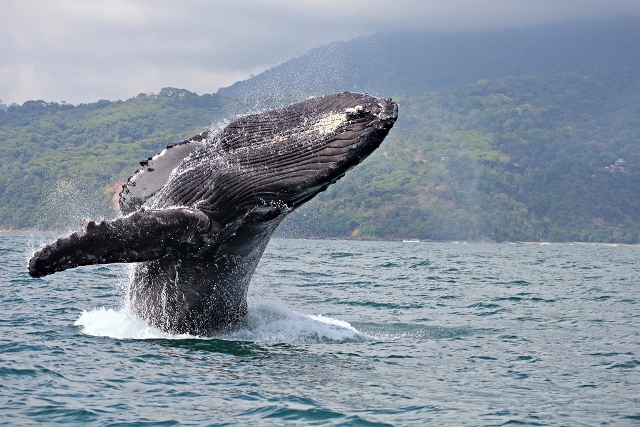
Specifically, in the Environmental Alteration course, students and Drs. Amador and Krygier will collaborate with Geoporter and its allied community members to collect environmental data on water quality and stream characteristics, temperature, and rainfall. Additional weather variables will be collected by Dr. Amador’s professional weather station (which will be used in both locations). We will acquire an array of various open source (e.g., free) geospatial data sets, including digital maps, remote sensing (satellite and at-site drone reconnaissance with Geology & Geography’s imaging drone) to monitor environmental conditions (such as meteorological and land use/land cover). These primary data sets will allow the students to assess the impacts of human behavior on the local environment, and to generate suggestions for local-scale changes and mitigation.
Impact of the Travel Component of Geography 347
Amy Work (OWU 2004) and Geoporter have over five years of experience and engagement with Bahia Ballena-Uvita and other regional communities, collecting and analyzing data and affecting community change with a focus on the environment. Before, during and after the course visit to Costa Rica, Drs. Amador and Krygier, Amy Work, students and community members will develop an expanded program of data collection and analysis, focused on the local impacts of global environmental change (with a focus on the locations in Ohio and Costa Rica). 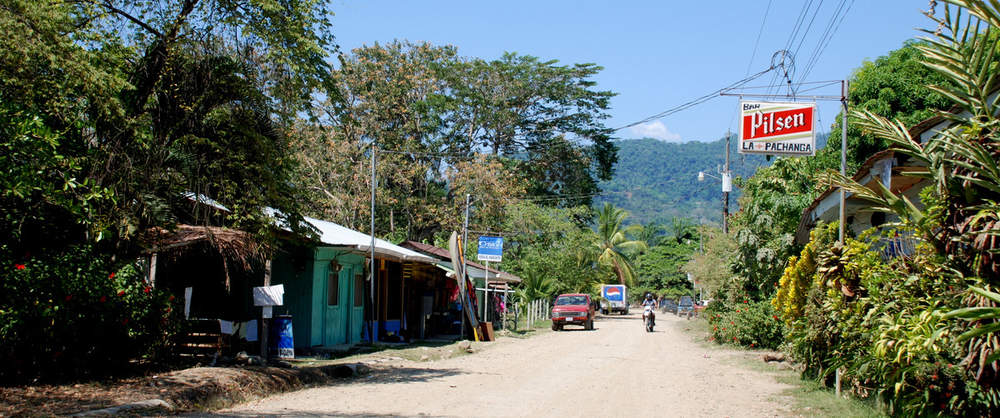 This expanded program meets the needs of both Geography 347 and community and Geoporter needs in Costa Rica. Bahia Ballena-Uvita provides an excellent opportunity for travel and engagement, given the rich ecosystem, economic importance of the environment for the future of the community, relevance to the study of local impacts on environmental change, and substantive connections (through Amy Work and Geoporter). Collaboration between participants in Costa Rica and OWU will occur through online, cloud-based GIS software, before, during, and after the travel. Each student will develop a focused course project that will reflect the four course objectives (outlined above). As a result of the students’ travel-learning experience, they will represent the University’s mission by applying course theory to a real-world problem, understanding the importance of citizenship and their ability to contribute to a global society.
This expanded program meets the needs of both Geography 347 and community and Geoporter needs in Costa Rica. Bahia Ballena-Uvita provides an excellent opportunity for travel and engagement, given the rich ecosystem, economic importance of the environment for the future of the community, relevance to the study of local impacts on environmental change, and substantive connections (through Amy Work and Geoporter). Collaboration between participants in Costa Rica and OWU will occur through online, cloud-based GIS software, before, during, and after the travel. Each student will develop a focused course project that will reflect the four course objectives (outlined above). As a result of the students’ travel-learning experience, they will represent the University’s mission by applying course theory to a real-world problem, understanding the importance of citizenship and their ability to contribute to a global society.
Additional Experiences for Students in the Travel Learning Component of the Course:
Several themes will be covered in the Environmental Alterations course for all students, including how humans impact the hydrologic cycle and the global energy balance. Throughout the course, we will assess how humans are involved in altering the local environment (in Delaware, Ohio) with a focus on local data collection here at “home.” Methods learned in Delaware serve as training for data collection in Bahia Ballena-Uvita, Costa Rica, where students will share what they know and co-collect data with community members. 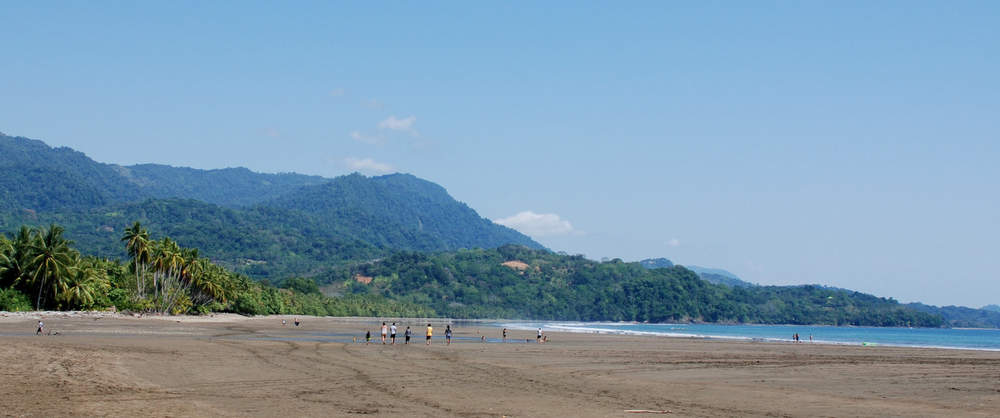 Amy Work and Bahia Ballena-Uvita community members will collect some environmental data before the course visit. Before, during and after the visit to Costa Rica, the students will do comparative analysis of the two study sites, using the available data (collected prior, and during the visits). We hypothesize that this approach will allow students to more clearly understand the differential environmental impacts of global climate change and the distinct difference in the response to global environmental change in the Global North and Global South. We believe that some of the students who travel to Costa Rica will wish to continue work on the project, in independent study projects.
Amy Work and Bahia Ballena-Uvita community members will collect some environmental data before the course visit. Before, during and after the visit to Costa Rica, the students will do comparative analysis of the two study sites, using the available data (collected prior, and during the visits). We hypothesize that this approach will allow students to more clearly understand the differential environmental impacts of global climate change and the distinct difference in the response to global environmental change in the Global North and Global South. We believe that some of the students who travel to Costa Rica will wish to continue work on the project, in independent study projects.
The .25 credit enrichment experience will focus on learning the techniques and methods of environmental data collection, mapping and analysis required for the Costa Rica experience but also for the broader goal of comparing and understanding the effects of global environmental change. It is feasible to teach these techniques to a class of 12, but not 35-40 (the typical enrollment of Geography 347). We will, as part of the enrichment experience, investigate how local ecosystems (such as streams) are impacted by humans, by collecting in-situ data, both in Delaware, Ohio (and later in Bahia Ballena-Uvita) on water quality, stream discharge, and stream pollution (due to surface runoff and trash infiltration). Techniques of collecting weather data (temperature, precipitation, etc.) will also be covered. We will “scale up” the research questions to investigate large-scale impacts humans have on the hydrologic system by using satellite imagery to detect variability in sea surface temperature (SST; applicable to tourism and whale watching), precipitation, and air surface temperature patterns. Additionally, we will investigate the effects of large-scale land-use land-cover (LULC) change, primarily through satellite and drone-acquired imagery. Insights from the enrichment experience will be used in the regular Geography 347 course.
Instruments for collecting data will be funded by various sources, including Dr. Amador’s start-up research funds, the Department of Geology and Geography, and Ohio Wesleyan University. We are requesting funds from the Travel Learning grant for relatively inexpensive instruments and equipment that will be used during our proposed course and left with Amy Work and Geoporter to continue collaborative data collection after the visit.
- Weather Station: Includes measurements for air temperature, relative humidity, precipitation, barometric pressure, solar radiation and wind speed/direction (already acquired with Dr. Amador’s start-up funds)
- A data logger and set of temperature and soil moisture probes (will be acquired with Dr. Amador’s start up-funds.).
- A set of 24 thermometers ($6/each) and 24 rain gauges ($5/each), where half will be used in data collection at each site location (Delaware and Bahia Ballena-Uvita). The thermometers and rain gauges will be calibrated against the weather station data for accuracy and precision (we are requesting funds for these devices).
- We will use a stream flowmeter ($249.95) to monitor stream velocity and changes in discharge over time. Changes in streamflow are a direct result of precipitation rates, changes in upstream surface runoff (i.e., paving roads), and can help indicate changes in erosion rates through sediment transport through the stream (we are requesting funds for this device).
- In order to measure the water quality of nearby streams, we will use a comprehensive water quality testing kit ($398.95) and an additional refill for added samples ($112.95) for each of the two sites. The variables measured include: pH, nitrate-nitrogen, phosphate, dissolved oxygen, total alkalinity, turbidity, and temperature (we are requesting funds for this device).
- For data notation, the data collectors will need appropriate, all-weather data notation notepads ($9/each) to record observations and notes during instrument installment and data collection periods (we are requesting funds for these items).
Together, we have collected a list of primary objectives that include data collection, analysis and problem solving, which can be accomplished between the facilitators (Drs. Amador and Krygier, and Amy Work), the community (residents of Bahia Ballena-Uvita), and the OWU students enrolled in the travel-learning course. Communication and pre-planning between the two sites (Delaware, Ohio and Bahia Ballena-Uvita, Costa Rica) will provide for a well-organized and mindful trip, which will lead to a better experience for all involved. The traditional Geography 347 course will meet Tuesday and Thursday between 1:10 – 3:00 pm, with the Travel-Learning component taking place (as a separate course) Tuesday and Thursday 3:00 – 4:00 pm.
